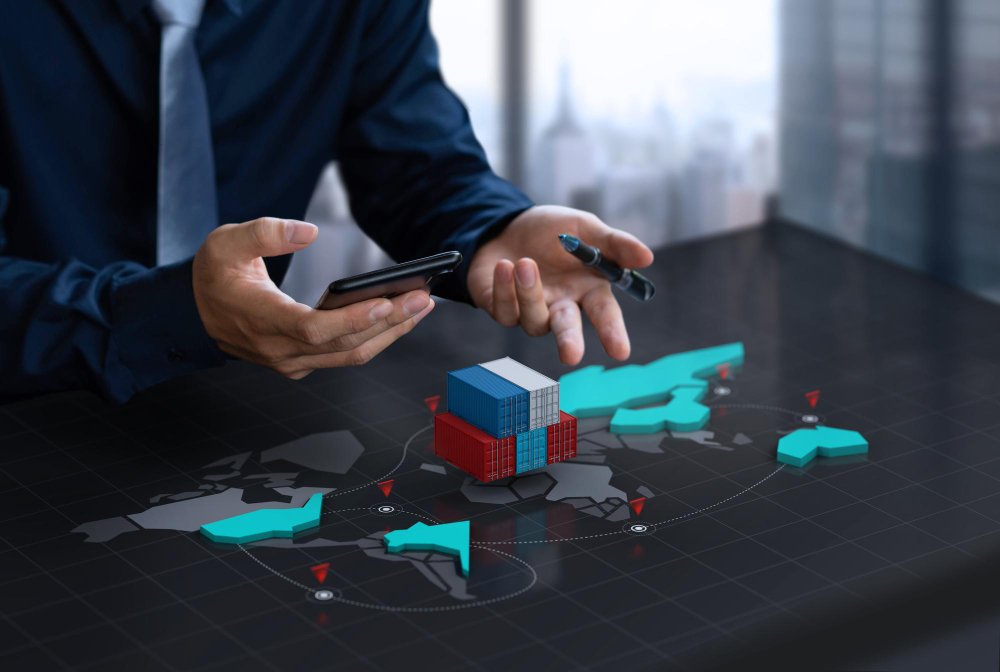How COOs Can Overcome Supply Chain Disruptions with AI and Automation

For Chief Operating Officers (COOs), managing supply chains has become a high-stakes balancing act. Global disruptions—ranging from geopolitical conflicts and raw material shortages to labor crises and climate-driven disasters—have exposed vulnerabilities in traditional supply chain models. The COVID-19 pandemic further underscored the fragility of global supply chains, causing an estimated $4 trillion in revenue losses across industries.
As COOs navigate these turbulent waters, AI and automation have emerged as game-changers. Businesses that embrace digital transformation can improve supply chain resilience, reduce operational risks, and optimize costs. However, implementing these technologies comes with challenges—legacy system integration, talent shortages, and scaling AI solutions—that must be addressed for long-term success.
This article explores how COOs can leverage AI and automation to mitigate supply chain disruptions, the technology hurdles that hinder digital transformation, and the role of a Virtual Delivery Center (VDC) in accelerating and optimizing these implementations.
Supply chain disruptions come in many forms, and their frequency is increasing. COOs must address multiple factors that create instability:
1. Geopolitical Uncertainty and Trade Restrictions
The U.S.-China trade war and Brexit disrupted global trade routes and supply networks.
Companies relying on single-source suppliers faced restrictions and higher tariffs.
Solution: AI-powered predictive analytics helps businesses anticipate geopolitical risks and diversify suppliers before disruptions occur.
2. Labor Shortages and Workforce Volatility
Post-pandemic workforce attrition and changing labor laws have led to manufacturing slowdowns and logistics delays.
Automation in warehousing, robotics in logistics, and AI-driven workforce planning can help mitigate reliance on manual labor.
3. Unpredictable Consumer Demand
Consumer preferences are shifting faster than ever. McKinsey reports that over 75% of consumers changed their brand preferences during COVID-19 due to supply chain inefficiencies.
AI-driven demand forecasting and real-time inventory optimization help businesses adapt quickly.
4. Supply Chain Cybersecurity Threats
Supply chain cyberattacks increased by 42% in 2023, targeting manufacturers, logistics providers, and retailers.
Zero-trust security models, AI-based threat detection, and blockchain transparency can secure data across supplier networks.
5. Rising Transportation and Energy Costs
Fuel prices and logistics costs are climbing, adding pressure to COOs managing cost-to-serve models.
AI-driven route optimization and IoT-enabled fleet management can cut transportation costs and enhance efficiency.
To combat these disruptions, COOs must rethink supply chain operations using AI and automation. Here’s how these technologies are addressing critical challenges:
1. AI-Powered Predictive Analytics for Risk Management
AI models can analyze millions of data points—weather patterns, economic indicators, political trends—to forecast potential disruptions and suggest contingency plans.
✅ Example: Siemens uses AI-driven risk modeling to simulate supply chain scenarios, ensuring business continuity even amid trade restrictions.
✅ Impact: COOs gain proactive control over supplier reliability, transportation risks, and inventory planning.
2. Intelligent Inventory Optimization
Overstocking leads to wasted capital, while understocking results in missed sales opportunities. AI-powered inventory management systems balance supply with demand, automatically adjusting stock levels.
✅ Example: Walmart’s machine learning algorithms predict demand fluctuations, ensuring optimal inventory placement.
✅ Impact: 40% reduction in stockouts, lower holding costs, and enhanced profitability.
3. Robotic Process Automation (RPA) in Warehousing
Repetitive manual tasks—order picking, packaging, and sorting—create bottlenecks in warehouses. RPA streamlines these processes, reducing labor costs and improving fulfillment speed.
✅ Example: Amazon’s robotic warehouse automation improves order processing speed by 50%.
✅ Impact: Faster fulfillment, lower operational costs, and improved customer satisfaction.
4. AI-Based Logistics and Route Optimization
Unpredictable delays in freight movement can cripple an entire supply chain. AI-driven route optimization analyzes real-time data—weather conditions, port congestion, fuel prices—to identify the most cost-effective delivery routes.
✅ Example: FedEx’s AI-powered logistics reduced delivery times by 30%, cutting fuel expenses.
✅ Impact: Lower transportation costs and faster shipment arrivals.
5. Blockchain for Supply Chain Transparency and Security
Counterfeit products and fraudulent transactions plague global supply chains. Blockchain ensures end-to-end transparency, securing transactions and product movement.
✅ Example: Nestlé implemented blockchain for food traceability, reducing contamination risks and improving compliance.
✅ Impact: COOs get fraud-proof supply chain visibility, strengthening trust across stakeholders.
While AI and automation promise transformation, COOs often struggle with key roadblocks:
✅ Legacy System Integration – Many supply chains rely on outdated ERP systems that aren’t AI-compatible.
✅ Scalability Issues – AI solutions must be customized and scaled globally across different suppliers and regions.
✅ Talent Shortages – There is a critical shortage of AI and automation experts, delaying implementation timelines.
✅ Data Fragmentation – Siloed supplier data prevents seamless AI-driven decision-making.
A Virtual Delivery Center (VDC) provides an on-demand workforce, cloud-based infrastructure, and scalable technology solutions, removing traditional barriers to AI adoption.
How COOs Benefit from a VDC for Supply Chain AI & Automation:
Pre-Vetted AI & Automation Talent – Access a global pool of AI engineers, automation experts, and data scientists without hiring full-time staff.
Cloud-Based Scalability – Deploy AI models across multiple locations without major CAPEX investments.
Plug-and-Play AI Solutions – VDCs provide pre-built AI modules (for demand forecasting, inventory management, logistics optimization) that integrate seamlessly with existing ERP systems.
24/7 Support & Monitoring – Unlike traditional IT teams, a VDC operates around the clock, ensuring real-time AI monitoring, troubleshooting, and updates.
Security & Compliance – Implement blockchain-based tamper-proof supply chain logs, AI-driven fraud detection, and zero-trust cybersecurity frameworks via the VDC.
✅ Case Example: A Fortune 500 automotive company reduced logistics delays by 60% after deploying a Virtual Delivery Center for AI-powered route optimization and automated demand forecasting.
Supply chain disruptions are here to stay, but COOs who embrace AI and automation will transform challenges into opportunities. By leveraging predictive analytics, RPA, blockchain, and AI-driven logistics, businesses can improve operational efficiency, reduce costs, and build a resilient, future-proof supply chain.
A Virtual Delivery Center (VDC) eliminates implementation roadblocks, allowing COOs to deploy AI and automation at scale—without massive capital investments or talent shortages.
The future belongs to those who act today—embracing AI, automation, and digital transformation to outpace supply chain disruptions and drive sustainable growth.

For modern telecom enterprises, delivering exceptional QoS is no longer optional—it’s a brand differentiator and a strategic lever for growth. Static provisioning models won’t cut it in a world of hyper-dynamic data usage.